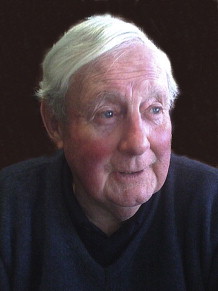
Professor Emeritus Martin Kean, a distinguished New Zealand orthodontist, died in Dunedin on December 11, 2009, at age 80. He was born in New Zealand and graduated with degrees in dentistry in 1952 and in orthodontics in 1954 from the University of Otago. In 1955, he obtained a Fulbright travel grant to work with Coenraad Moorrees at the Forsyth Dental Center, Harvard School of Dental Medicine. During that time, Kean and Moorrees carried out the work for their landmark article on natural head position published in the American Journal of Physical Anthropology in 1958. They proposed that natural head position should replace the then-current method of using the Frankfort plane to orient a patient’s head. This concept was a breakthrough at the time, and today natural head position is universally accepted as the standard head orientation in 2-dimensional and 3-dimensional photographic and radiologic imaging in orthodontics.
While in the United States, Martin also participated in Charles Tweed’s course in Tucson, Ariz, and he used this treatment approach to great effect for many years. In 1957, he spent nearly a year on a Newland-Pedley Fellowship in the Department of Orthodontics, Guy’s Hospital Dental School, London, and, in 1958, he joined the orthodontic faculty of the University of Otago. He spent a sabbatical year in 1964-65 on an International Postdoctoral Fellowship of the US Public Health Service with Dr Melvyn Baer. In 1970, he was appointed to the chair in orthodontics at the University of Otago, a position he held until his retirement in 1992. He established the first continuous graduate training program in orthodontics in New Zealand. In 1978, he was appointed dean of the Faculty of Dentistry at the University of Otago. During this time, he began working with Philip Houghton in the Anatomy Department at the Univeristy of Otago, and together they published a series of articles on the form and growth of the human head. In these articles, they recognized that the unique Polynesian head form allowed the formulation of a coherent hypothesis for human head form and craniofacial growth. Central to this hypothesis was the insight that variations in the cranial base influence the spatial positioning of the upper face and the form of the mandible. The latest article by Martin, James Ackerman, and William Proffit on the interaction of function and stability in the dentition was published in the Australian Orthodontic Journal (2009; 25:169-72) just a few days before his death. Martin was married to his devoted wife, Darsie, for 49 years and was extremely proud of the achievements of his children, Martin, Rosemary, and Michael, and his grandchildren Elisabeth, Miro, Grace, Orlando, and Rai.
Stay updated, free dental videos. Join our Telegram channel

VIDEdental - Online dental courses


